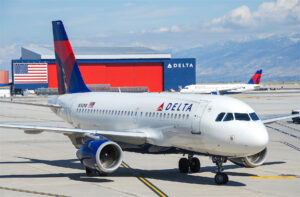Intermittent Runway Closures at SFO - January-June
#31
Join Date: Nov 1999
Location: if it's Thursday, this must be Belgium
Programs: UA 1K MM
Posts: 6,484
Perhaps they are working on GPS/RNP approaches as a way to allow more capacity? I have no idea -- it would be great though.
Multiple localizer beams sounds very complicated -- and expensive when everything is moving to GPS. And multiple localizer beams are in use... nowhere.
Multiple localizer beams sounds very complicated -- and expensive when everything is moving to GPS. And multiple localizer beams are in use... nowhere.
#32
Join Date: Feb 2010
Location: PDX (wish I was in HNL)
Programs: Platinum
Posts: 1,687
(BTW, found this cool youtube video of an RNP landing in Tibet, from a link via James Fallow of The Atlantic: http://www.youtube.com/watch?v=ZqgvAmf0grE )
#35
Join Date: Aug 2008
Location: SF Bay Area
Programs: UA 1K, Hyatt Globalist, Virtuoso Travel Agent, Commercial Pilot
Posts: 2,118
So why not have multiple localizer beams, as 'way points' of sorts? All you'd need is some buoys out on the Bay with localizer beams attached to them, maybe one every 0.5 miles to 1 mile. Say they put two lines of of localizer beams out to the San Mateo Bridge (one line for 28L, the other for 28R)...couldn't pilots then follow the localizer beams, one after the other, for < 150' or less deviation over the entire distance? It seems like it would then be safe even in zero visibility so long as the planes can follow the waypoints.
RNAV approaches address a lot of the physical equipment issues, but are actually designed to behave very similarly to ILS approaches in the way that the CDI scale shrinks as one gets closer to the runway threshold. Generally, this behavior is expected, and trying to adjust it would require a significant amount of additional training because it would fundamentally change the way that some approaches work.
This is not an easy problem to fix, but there are a few options being explored that will hopefully address some of the issues in due time. Most likely the only solutions available will involve novel ways of increasing separation like the approaches I described above. If the solutions were as simple as you describe, they would have been done long ago ... when humans are involved, simply requiring more precision isn't as easy as it seems.
#36
In Memoriam, FlyerTalk Evangelist
Join Date: Jun 2000
Location: Benicia CA
Programs: Alaska MVP Gold 75K, AA 3.8MM, UA 1.1MM, enjoying the retired life
Posts: 31,849
Related discussion in the Alaska forum that has not been moved here:
2013 runway closures @ SFO ahead...
2013 runway closures @ SFO ahead...
#37
Join Date: Jul 2011
Location: SF Bay Area
Programs: UA MileagePlus (Premier Gold); Hilton HHonors (Gold); Chase Ultimate Rewards; Amex Plat
Posts: 6,820
Localizers don't work that way (for a number of reasons, amongst them the monitoring requirements for Cat 3 ILS systems, the fact that a localizer antenna array for a Cat 3 ILS is at least 86 feet wide and requires a significant amount of power, and that doing so would require several rapid frequency changes during the most critical phases of flight). Besides, even at the runway threshold, a 3/4-scale deflection of the CDI is about 525' off of the runway centerline. While it is unlikely that a pilot who reaches decision 525' off of the runway centerline would be able to complete the approach rather than performing the missed approach, it would be considered safe and legal for him to be there (although I personally would call the approach off long before that point).
RNAV approaches address a lot of the physical equipment issues, but are actually designed to behave very similarly to ILS approaches in the way that the CDI scale shrinks as one gets closer to the runway threshold. Generally, this behavior is expected, and trying to adjust it would require a significant amount of additional training because it would fundamentally change the way that some approaches work.
This is not an easy problem to fix, but there are a few options being explored that will hopefully address some of the issues in due time. Most likely the only solutions available will involve novel ways of increasing separation like the approaches I described above. If the solutions were as simple as you describe, they would have been done long ago ... when humans are involved, simply requiring more precision isn't as easy as it seems.
RNAV approaches address a lot of the physical equipment issues, but are actually designed to behave very similarly to ILS approaches in the way that the CDI scale shrinks as one gets closer to the runway threshold. Generally, this behavior is expected, and trying to adjust it would require a significant amount of additional training because it would fundamentally change the way that some approaches work.
This is not an easy problem to fix, but there are a few options being explored that will hopefully address some of the issues in due time. Most likely the only solutions available will involve novel ways of increasing separation like the approaches I described above. If the solutions were as simple as you describe, they would have been done long ago ... when humans are involved, simply requiring more precision isn't as easy as it seems.
Now say someone put a bunch of transmitters around the runway and published their exact locations, and each transmitter sent out a coded signal. The plane could receive this signal, and calculate its position precisely. Unlike GPS, this would be VERY easy because:
1. The signals would be MUCH stronger than -140 dBm (harder to jam)
2. The locations of the transmitters would not known exactly and would not be changing
3. No relativistic time correction is required for the clock at the transmitter
Furthermore, this system would be able to execute an approach on ANY path, not just straight in. GPS gives about 10m accuracy from satellites 12600 miles away; I'm sure that this could do a lot better, perhaps accuracy within a few mm.
#38
Join Date: Dec 2009
Location: WAS
Posts: 3,015
Just looked up how ILS works on wikipedia...very interesting, but very low tech. I think the FAA just needs to borrow a page from the GPS book. If they had a series of transmitters around the runway, it would be very easy to localize the plane with respect to all of them, and execute the desired approach. Keep in mind, GPS works by using the differences in the DELAYS of the signals from 4 or more GPS satellites (the results of propagation delays at the speed of light) to then calculate a location. It does this even though the satellites are zooming overhead at orbital velocity, and are required to correct for relativistic time dilation (the clocks on the satellites run slower than clocks on the ground). The timing required by GPS is that precise, and the receiver likewise needs to know time that precisely in order to look at the differences in the propagation delays...AND a GPS receiver can receive these signals at strengths of -140 to -150 dBm!
Now say someone put a bunch of transmitters around the runway and published their exact locations, and each transmitter sent out a coded signal. The plane could receive this signal, and calculate its position precisely. Unlike GPS, this would be VERY easy because:
1. The signals would be MUCH stronger than -140 dBm (harder to jam)
2. The locations of the transmitters would not known exactly and would not be changing
3. No relativistic time correction is required for the clock at the transmitter
Furthermore, this system would be able to execute an approach on ANY path, not just straight in. GPS gives about 10m accuracy from satellites 12600 miles away; I'm sure that this could do a lot better, perhaps accuracy within a few mm.
Now say someone put a bunch of transmitters around the runway and published their exact locations, and each transmitter sent out a coded signal. The plane could receive this signal, and calculate its position precisely. Unlike GPS, this would be VERY easy because:
1. The signals would be MUCH stronger than -140 dBm (harder to jam)
2. The locations of the transmitters would not known exactly and would not be changing
3. No relativistic time correction is required for the clock at the transmitter
Furthermore, this system would be able to execute an approach on ANY path, not just straight in. GPS gives about 10m accuracy from satellites 12600 miles away; I'm sure that this could do a lot better, perhaps accuracy within a few mm.
Good idea? Sure. Practical? Doubtful.
#39
Join Date: Jul 2011
Location: SF Bay Area
Programs: UA MileagePlus (Premier Gold); Hilton HHonors (Gold); Chase Ultimate Rewards; Amex Plat
Posts: 6,820
Sure. And now you've got a system that requires specialized equipment onboard the aircraft (or supposing that an existing system could be modified, tweaked equipment). All the effort and cost so that one airport can have normal flow in bad weather.
Good idea? Sure. Practical? Doubtful.
Good idea? Sure. Practical? Doubtful.
Last edited by STS-134; Jan 6, 2013 at 10:19 pm
#40
Join Date: Aug 2008
Location: SF Bay Area
Programs: UA 1K, Hyatt Globalist, Virtuoso Travel Agent, Commercial Pilot
Posts: 2,118
GPS approaches already exist which allow approaches requiring the precision of a Cat 1 ILS. The type of system you are describing already exists and is in testing, but doesn't solve ANY of SFO's problems. The positioning data is precise enough, but as long as approaches are sometimes flown by humans (or as long as equipment can fail) we need high tolerances for error.
#41
Join Date: Jul 2005
Location: PEK
Programs: A3*G, UA Gold EY Silver
Posts: 8,994
That was the idea... extend one of the runways into the bay and do staggered approaches. They were building a case for it in late 90s with delay numbers, but then 9/11 happened. Next time they considered doing it there was a big pushback from one of the 'green' organizations responsible for the bay (maybe the bay conservancy, I don't remember exactly who).
#42
Moderator Hilton Honors, Travel News, West, The Suggestion Box, Smoking Lounge & DiningBuzz
Join Date: Jun 2000
Programs: Honors Diamond, Hertz Presidents Circle, National Exec Elite
Posts: 36,075
For awhile there was also some traction for building a floating taxiway across to OAK; I remember some pointing out (don't know if this is true) that the taxi from the east end of SFO to the west end of OAK was about as far as the furthest taxi possible at DFW.
#43
Join Date: Jul 2011
Location: SF Bay Area
Programs: UA MileagePlus (Premier Gold); Hilton HHonors (Gold); Chase Ultimate Rewards; Amex Plat
Posts: 6,820
Um...you realize that this is about 10 miles right?
#44
Moderator Hilton Honors, Travel News, West, The Suggestion Box, Smoking Lounge & DiningBuzz
Join Date: Jun 2000
Programs: Honors Diamond, Hertz Presidents Circle, National Exec Elite
Posts: 36,075
#45
Join Date: Jul 2004
Location: PDX
Programs: DL DM, AS MVP 100K, Amtrak peon, Colbert Lifetime Platinum
Posts: 4,538
Did this maintenance work end early or get sequester'd, or does work sometimes end early in a given weekend period or get postponed due to rain? 28R was supposed to be closed when I arrived last Sunday night, yet we landed on it. 
EDIT: Turns out it was weather. Last weekend's window has been rescheduled to next month. No mention of the June windows, which may have been dropped.

EDIT: Turns out it was weather. Last weekend's window has been rescheduled to next month. No mention of the June windows, which may have been dropped.
Last edited by GoAmtrak; Apr 9, 2013 at 5:21 pm Reason: answered own question






















